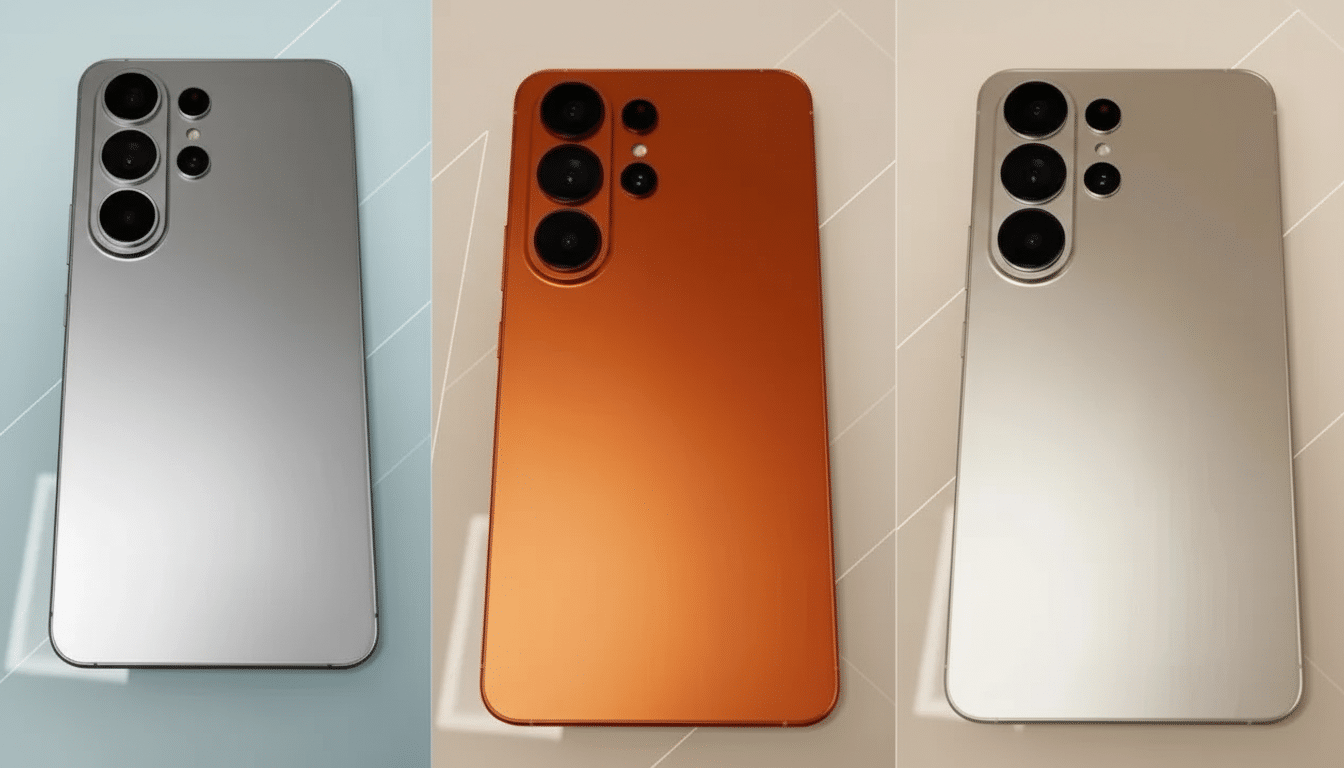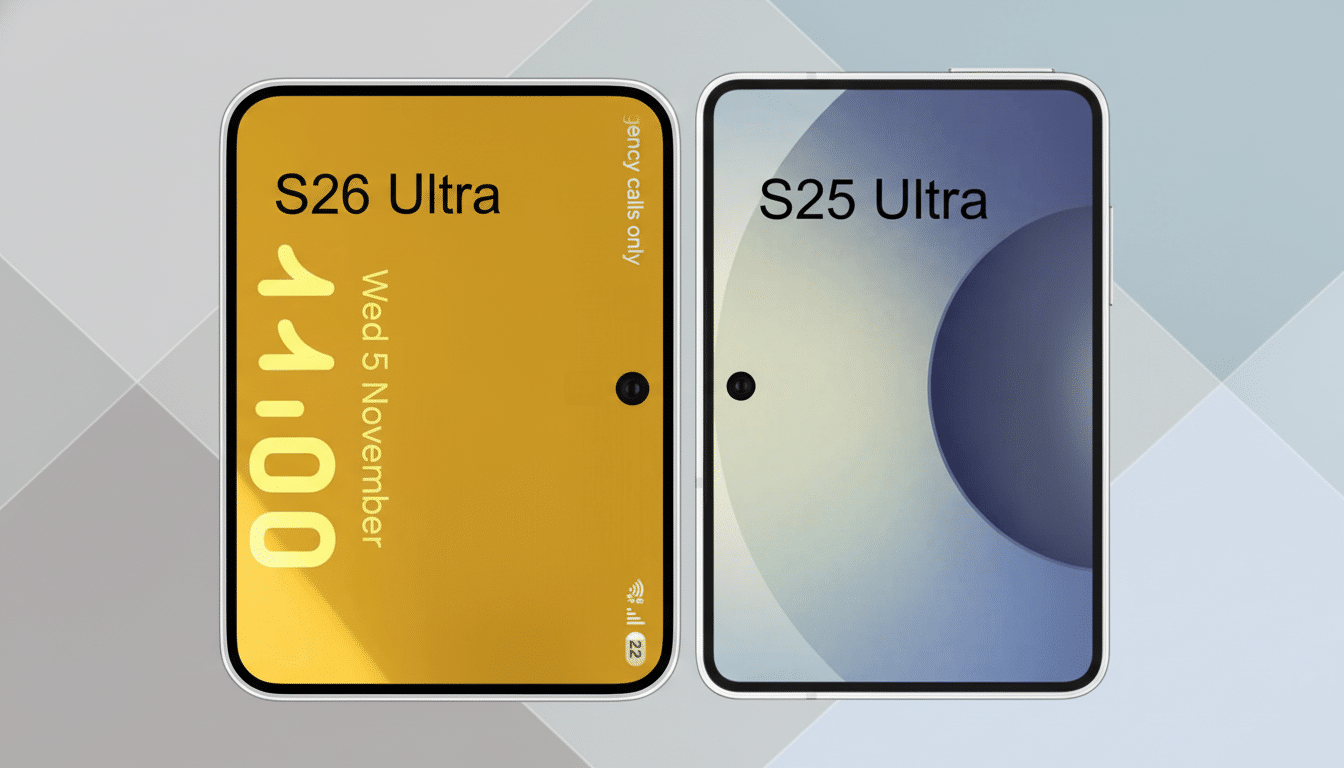Shady Galaxy S26 Ultra clones are manifesting with spec sheets that sound like a wish list of the best features in a flagship and price tags under $200. The listings, at first glance, look irresistible — huge batteries, massive storage, even a slot for the stylus! — but upon closer inspection they present a pileup of red flags that seasoned buyers would pick out in seconds.
What these enticing S26 Ultra clone listings promise to offer
At online marketplaces like Amazon, you’ll see “S26 Ultra” and “C26 Ultra” phones that tempt you at a price point of approximately $170 by showing off a 7.3-inch display, 8GB of RAM, 256GB storage, a 6,800mAh battery, and absurd camera numbers amounting to something like “108MP+72MP.” A few even appear to feature a stylus and built-in slot — an obvious nod to Samsung’s Ultra line — and advertise microSD support the majority of modern flagships opt out of.
- What these enticing S26 Ultra clone listings promise to offer
- Why the specs don’t compute on these too-cheap S26 clones
- A standout outlier from a tried-and-true brand
- How to recognize a fraudulent smartphone listing online
- The real dangers behind the laughs with counterfeit phones
- Bottom line on too-good-to-be-true S26 Ultra clone deals

Another listing appears at the same price point but lists features such as a 7.3-inch “HD” display (though it says a resolution of 3,040 x 1,440) and an 8,000mAh battery with 16GB of RAM and up to 1TB in storage.
Oddly, one page suggests a “Snapdragon 8 Gen 3” with a “10-core CPU,” while another advertises a “Snapdragon 8 Elite” with twelve cores. None of that matches reality.
There are the sweeteners that the packaging promises — screen protectors, chargers, and even headphones. Considering how often the silicon hasn’t materialized and how many times camera claims have also been bunk, it’s a good idea to assume that whatever comes in the box is similarly suspect.
Why the specs don’t compute on these too-cheap S26 clones
Just flagship chipsets are already busting budgets. Presumably it costs a quarter of the price of a flagship phone to start, because that’s what it would have had to cost for these Counterpoint Research teardowns to be anything other than wrong about phones carrying bills of materials of several hundred dollars, before any additional expenses like OLED panels, high-speed storage, flagship cameras, and quite large batteries. Recent flagship total hardware costs, according to TechInsights, have been near or north of $500. It’s physically impossible to sell a real device with an actual Snapdragon 8-class chip for $170 and get it beyond the factory gate.

The technical inconsistencies are blatant. Qualcomm’s flagship phone-making chips today have 8 CPU cores, not 10 or 12. MediaTek’s Dimensity 9300 family also features 8 cores. GSMArena spec pages and Qualcomm docs back this up. When a listing trumpets a fanciful core count or mismatched resolutions — “HD” next to 3,040 x 1,440 — it’s a clear indicator that the seller is spoofing specs, which are frequently exaggerated on knockoffs that take different midtier chips and fudge camera megapixels in their software.
Then there’s the chilling reality of market pricing. All that said, IDC and Counterpoint see global smartphone ASPs stuck in the mid-$300 range, while sub-$200 categories are largely ruled by entry-level SoCs like Unisoc or Helio G-series/Snapdragon 4-series. And true UFS storage at 1TB or OLEDs at QHD+ and high-end camera stacks do not thrive in this bracket.
A standout outlier from a tried-and-true brand
One of the established players, itel, however, further confuses with a Super 26 Ultra that seems to be trading in name and camera aesthetic. It goes for about $200 with somewhat realistic parts: a budget-tier T-series chip from Unisoc, a 6,000mAh battery, and an IP65 rating on top of that curved 144Hz OLED. It’s not a one-to-one copy, and doesn’t pretend to house a top-tier Qualcomm platform. Yet the branding is meant to ride Samsung’s coattails, and buyers need to distinguish cosmetic mimicry from bona fide flagship-class performance.
How to recognize a fraudulent smartphone listing online
- Cross-reference the chipset and CPU core count with Qualcomm or MediaTek specs. If there is a discrepancy, turn around.
- Scrutinize display claims. The word “HD” next to QHD+ numbers is a red flag; knockoffs are often defined by haphazard specs.
- Question storage and RAM. 16GB/1TB at $170 is fantasy. Clones often fake UFS with entry-level eMMC.
- Look for certification and bands. An absence of an FCC ID, unclear LTE/5G bands, or no SAR information indicates a compliance job half done.
- Read reviews critically. The FTC has sounded the alarm on phony testimonials — check for verified purchases with photos, test screenshots, and genuine language, not generic praise.
- Verify software and updates. Scammy brands are unlikely to post update policies; your data is vulnerable without security patches.
The real dangers behind the laughs with counterfeit phones
But beyond the absurdity of “12-core Snapdragon elites,” there are real dangers. Counterfeits frequently arrive with obsolete versions of Android, minimal security credentials, little to no connectivity, and dodgy batteries. Returns can be tough, and resale value is virtually nil. Performance is often ultra-budget silicon, not premium-flagship, even if the phone boots at all.
Bottom line on too-good-to-be-true S26 Ultra clone deals
If a Galaxy S26 Ultra clone offers up impossible specs for under $200, consider the numbers completely fictitious. In general, you’ll want to stick with reputable budget lines put out by major brands, and cross-reference spec sheets against trusted databases or manufacturer pages. The only thing that’s unbelievable about these clones isn’t the performance, but the marketing.

